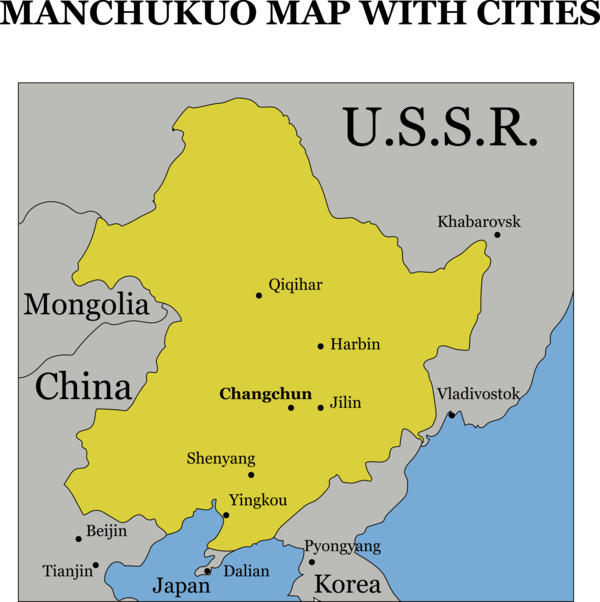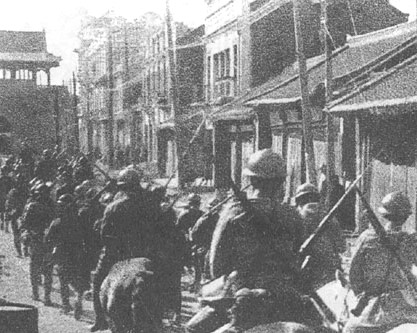During the South Korea-Japan summit talks in March, Japan's proposed amendment of its peace constitution was discussed. Japan's constitutional revision raises concerns as it could potentially transform Japan into a nation capable of waging war, posing a threat to security in East Asia. In the past, Korea had experienced which is similar to the current situation. Many historical instances exist where Japan posed a threat to peace in East Asia, most notably the Manchurian Incident of September 18th, 1931. This incident not only affected China but also had significant implications for Joseon immigrants. The Manchurian Incident marked the beginning of Japan's aggressive expansion, ultimately impacting the peace in East Asia. Let's delve into the development of the Manchurian Incident and the subsequent changes it brought to Korea.
Conflicts between Joseon, Japan, and China in the Manchuria Area

Many Joseon people faced difficulties and migrated to the Manchurian area. The substantial Joseon population in Manchuria was due to its appeal as a place for a fresh start away from the hardships of Joseon. The migration began in the 1870s, driven by excessive exploitation by the ruling class and periods of famine in Joseon. This tendency continued until the 1900s, contributing to the formation of a Joseon community in Manchuria. Additionally, Manchuria was a region where Russia, China, and others vied for influence even before Japan's invasion. It was a strategically significant area connecting the Chinese mainland, Russia, and the Korean Peninsula. Following the Russo-Japanese War, Japan extended its control over certain parts of Manchuria. Japan established the South Manchuria Railway Company (SMRC) and expanded its interests in the region, centered around the SMRC. Japan deployed its military to expand its influence over Manchuria. As these efforts were underway, a violent clash between Joseon people and Chinese individuals in July 1931 provided Japan with a pretext for intervention. Around 200 Joseon people were migrating to Mount Manbosan in Manchuria when they encroached upon land owned by Chinese individuals, prompting China to halt land cultivation by Joseon people. This incident served as the cause behind the clash. Japan used the pretext of protecting its nationals to dispatch consulate officials to Manchuria to oversee the cultivation. A violent clash ensued as Chinese individuals destroyed Joseon irrigation facilities, leading to a conflict rooted in the national tensions between China and Japan.
Unfolding and Finding the Hidden Intention of Manchuria Incident
The conflict between Japan and China culminated in Japan's invasion of Manchuria. In September 1931, the Japanese military blew up their own railway and falsely claimed it as an act of sabotage by the Chinese, sparking the Manchurian Incident. Japan's Kwantung Army occupied Manchuria military operations and established the puppet government of Manchukuo. This occupation turned Manchuria into a strategic military base that threatened peace in East Asia. Japan secured a route to move into China and procured material and human resources, facilitating their aggressive expansion and invasion. In fact, the Manchurian Incident had more than just the aim of expanding Japan's influence in Manchuria. It also intended to suppress anti-Japanese movements among Joseon immigrants in the region and serve as a launching point for Japan's wider East Asian aggression. Manchuria was a region with conflicting interests from several nations, and its state of deadlock allowed for armed resistance against Japan. However, Japan's intervention disrupted the armed resistance in Manchuria. Additionally, Japan's military deployment in the region exacerbated tensions between Chinese and Joseon nationals, making life more difficult for Joseon immigrants. Subsequently, during the Manchurian invasion, Japan recruited Joseon nationals into their military and relocated others to support their war efforts. These Joseon immigrants were not only exploited for their labor in the military but also for procuring food and supplies for Japan's benefit.
Changes after Manchuria Incident

After the Manchurian Incident, independence activists of Joseon within China, who had lost their bases engaged in a movement for unification of the forces. This led to collective efforts where various factions united their strength for armed struggles. In 1932, Lee Bong-chang, a member of the Korean Patriotic Corps under the Provisional Government of the Republic of Korea, attempted an attack on Emperor Hirohito in Tokyo. In April of the same year Yoon Bong-gil, threw a bomb in Hongkou Park in Shanghai, targeting key Japanese figures. As a result, this escalated unfavorable sentiment towards Joseon people in China. Despite challenges, anti-Japanese sentiment endured, leading to cooperation with China. With the help of the Chinese government, the Provisional Government was able to establish a branch office in Chongqing. Meanwhile, armed struggle movements in the Manchurian region continued. Various forces such as the Korean National Army Liaison Unit, the Joseon Revolutionary Army, etc. carried out armed struggles in Manchuria. However, despite the armed struggles, Japan began a full-scale invasion of China. As the situation worsened, multiple forces gathered and consolidated their strength in the 1940s, continuing their armed struggles.
Around 90 years ago, Joseon immigrants living in the Chinese territory of Manchuria faced many trials. They became a pretext for Japan's Manchurian Incident, leading to their suffering and even conscription into war. Despite these challenges, the will for anti-Japanese movements maintained, transforming the crisis into cooperation with China. Let's remember the Manchurian Incident that mobilized and sacrificed many Joseon people due to Japan's aggressive war.

